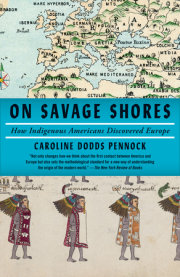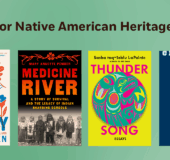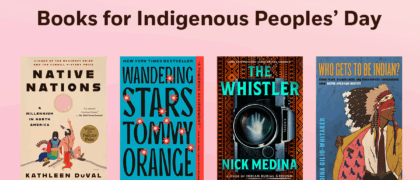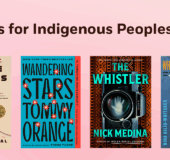Chapter 1
Slavery
From the earliest encounters, Native peoples were seen by Euro-peans as a commodity to be exploited. On 11 October 1492, Columbus’s crew ‘discovered America’, or more accurately, they first sighted the Taíno island of Guanahaní, which they ‘took possession of . . . in the names of the King and Queen’, undeterred by the fact the island was quite obviously ‘possessed’ already. That day, Columbus concluded his diary: ‘[The people] ought to make good slaves for they are of quick intelligence since I notice that they are quick to repeat what is said to them, and I believe that they could very easily become Christians, for it seemed to me that they had no religion of their own. God willing, when I come to leave I will bring six of them to Your Highnesses so that they may learn to speak. And take them he did.
Exactly a month after Columbus’s crew first spied land, five young Indigenous men who had paddled a canoe out to his flagship, the Santa María, found themselves ‘detained’. Seven women and three children were also abducted from a nearby house and carried on board. According to Columbus’s letters, these people—not even the first to be stolen from the islands—were taken ‘by force’ in order to ‘learn our language, so that we would know what there is in this land and so that on their return they could act as interpreters’. Based on his experience of African enslavement, Columbus was convinced that ‘the men would behave themselves better in Spain with their own women than without them’ because ‘if they have their women, they will be more willing to provide the cooperation expected of them’. Fascinatingly, Columbus also seemed to think that it was the women who would ‘do much to teach our men the language’, disturbingly foreshadowing the later trafficking of Native women, ostensibly as intermediaries, but often also into sexual slavery. The following night, a man of about forty-five years old rowed out to the ship and begged to be allowed to accompany his wife, son and two daughters, who were among the prisoners. The man was allowed aboard, becoming perhaps the first Indigenous American to ‘voluntarily’ travel to Europe, albeit under extreme duress. Tragically, we do not know whether he or his family ever made the trip, as only six or seven of the islanders survived to be presented to the Catholic monarchs, Ferdinand and Isabella, in April 1493.
These Indigenous people may not have intended, or wanted, to be explorers, but they were still the first of their people to set foot in the ‘new world’ of Europe. These were Lucayan Taíno people, their name deriving from the Arawak words ‘Lukkunu Kaíri’ (good island people). They were the main inhabitants of the larger islands, and their lifestyle seemed in some ways to conform to European expectations of ‘primitive’ people: they frequently went naked and lived in communal houses built of wood, straw and palms. But they had sophisticated polities and kinship networks which the Spanish (and, for many years, scholars) failed to recognise. Despite the decorous protocol and complex etiquette which typified his early exchanges with Taíno chiefs, Columbus nonetheless behaved as if their people were objects, grabbing Native men, women and children as he journeyed along what is now the Bahamian archipelago. In November 1492, the Admiral kidnapped around two dozen people from Cuba, and shipped them to Spain as ‘curiosities’ and potential translators. The careless objectification of the Taíno is typical of European attitudes to Indigenous peoples; they were valued and treated according to what would make them of most use. But the Spaniards were also aware that these were humans, and potential Christians, a fact which proved of considerable importance in the years to come.
It must have been overwhelming for the Taíno travellers. Ripped away from their homes, they spent several months trapped on a strange ship, facing the terrors of the ocean, and watching their companions die one by one. No strangers to waterborne commerce and transport, these island men would have been well acquainted with travel in large canoes, and with the vicissitudes of being on the water. But a long ocean crossing on an enclosed vessel was an entirely different proposition. We have few records of the minutiae of life at sea in this period, but the Spanish judge Eugenio de Salazar left a fabulously evocative record of his transatlantic passage when he was posted to Santo Domingo in 1573. Although written close to a century after the Taínos’ voyage, Salazar’s account gives a rare insight into life aboard an ageing caravel similar to the smaller ships used by Columbus. The crowded conditions and cramped quarters he describes are almost unimaginable. As a senior official, he was granted the ‘great privilege’ of ‘a tiny cabin, about two feet by three’, in which he was crammed with his wife and daughter while suffering relentless seasickness in almost complete darkness. The less fortunate were crowded together in ‘dwellings [that] are so closed in, dark, and evil-smelling that they seem to be more like burial vaults or charnelhouses [where skeletons were stored]’. Complaining of the stinking water, the corrupt and draconian crew, ‘flights of cockroaches’, ‘rats so fierce that when they are cornered they turn on the hunters like wild boars’, he abhorred the communal life, people of all ranks crowded cheek by jowl, eating, cooking, belching, vomiting and emptying their bowels without restraint. ‘At sea there is no hope that the road, or the host, or the lodging will improve; everything grows steadily worse; the ship labors more and more and the food gets scantier and nastier every day’, he wrote. It is hard not to reflect on the experiences of enslaved Black and Native people who were crammed into the holds of the European ships which ploughed the same route. If the accommodations of free people were like ‘the caves of Hell’, ‘dark by day and pitch-black by night’, what horrors were inflicted on those forced to endure sickness and excrement without relief?
When the Taínos disembarked in Palos, Columbus left two or three ‘that were sick’ behind and took the ‘six that were healthy’ on the journey to court. We know that two of the survivors were men, but no children are mentioned as arriving in Seville, so we are left wondering whether they were simply invisible to the chroniclers, or if they perished on the voyage and their bodies were tossed carelessly into the roiling ocean. The few Taínos that survived arrived in Seville, before travelling to Barcelona, where they were presented to the king and queen, along with beautiful green parrots, worked gold objects, small pearls, ornate belts, and other curiosities which ‘no one had seen or heard of in Spain before’. The Indigenous people must have been a subject of incredible curiosity, for Columbus was at pains to trumpet his discovery, and people crowded the streets to look at them. We know about their arrival because Columbus’s triumph is described in slightly cynical detail by Bartolomé de Las Casas—an author and friar who spent his later life campaigning for better treatment of the Indigenous peoples, who he saw as childlike innocents, in need of salvation—in his unfairly neglected and never-translated-into-English History of the Indies. Ever modest, when the newly confirmed ‘Admiral’ arrived at court he gave a stirring speech intended to shore up his position and secure future investments, conjuring up a picture of a land where coarse grains of gold were to be found just lying around, ready for melting. Mindful of the reputation of the ‘Catholic monarchs’, he also described another ‘precious treasure’: the multitudes of people, who were simple, meek and naked, perfectly suited to being brought to the Christian faith. At this point, Columbus ushered forward the Taíno, and Ferdinand and Isabella – inspired to help and convert these poor innocents—threw themselves on their knees, crying pious tears. The royal choir—apparently primed for this moment—then burst into song, and it seemed at that ecstatic climax that they were ‘communicating with celestial deities’.
We can only imagine the Taínos’ reaction to this elaborately choreographed spectacle. Ritualised weeping was not unusual among Indigenous cultures, and they were not complete strangers to the oddities of Europeans by this point, but were surely baffled by the rulers’ fervent response to their arrival. Given the significant imbalance of power, it must have been quite disorientating to have the rulers kneel at their feet. The Taínos’ sense of the encounter may also have been interlaced with the objects on display. Among the marvels around them were guaízas, small sculptures of faces, often made of shell. These ‘faces of the living’ were a symbol of kinship in Taíno culture, an embodiment of a person’s spirit, often given by caciques as a way of cementing relationships. Zemís—objects connected to the life force of ancestors with complex ceremonial purposes—were also probably among the objects brought to court by Columbus. The gold figures, parrots, jewelled belts, and guaízas were gifts from Caribbean caciques, Indigenous chiefs who likely saw these symbolic exchanges as gaining some control by sacrificing part of themselves. How must the Taínos have felt, presented as objects to a foreign ruler, but surrounded by tokens of their own power? It’s hard not to think these few survivors would have been despairing and overwhelmed, but what possibilities might they have seen reflected in the guaízas and other treasures, echoing the Taínos’ spirits back from their surroundings?
Unlike the later Totonacs, these first travellers did not have a translator, but we know that they had quickly learned to communicate with the Spaniards ‘by speech or by signs’ and had been ‘of much service’. According to Peter Martyr, it is due to some of these travellers that we have what may be the first Indigenous American dictionary in a Latin alphabet, for ‘thanks to [them] all the words of their language have been written down with Latin characters’. Columbus himself wrote admiringly of the Taínos’ swift ability to adapt, calling them ‘men of very subtle wit’ and, according to Oviedo, the Taíno were astute enough to go along with the situation they found themselves in. ‘Of their own will and counsel, [they] asked to be baptised’, a favour which was graciously granted by the Catholic monarchs who, with their eldest son John, agreed to be the godparents. Most of the Taínos were given unknown names picked by their new sponsors, but the most important men were honoured (and colonised) by being baptised ‘Fernando de Aragon’ (Ferdinand of Aragon) after the king and ‘Juan de Castillo’ (John of Castile) after his son. These two ‘principal Indians’ were apparently relatives of the cacique Guacanagarí, ruler of Marién on what became Hispaniola, who allowed Columbus to establish the short-lived settlement of La Navidad, the first European colony in the Americas, on his lands. The emergence of a cacique’s relatives among the captives complicates our understanding of these events, as it seems less likely they were kidnapped, and they must also have joined Columbus’s company after he seized the Taíno in Cuba. Were they official representatives of Guacanagarí? An eighteenth-century account, the first to be written by a Hispaniolan, says that two of Guacanagarí’s sons, along with eight other indios ‘of their own will wanted to go to Castile’. It is possible that the agency and engagement of the Taínos was later written into their history to create a more coherent Christian history of Hispaniola, but we also know that Guacanagarí had a strategic (if incompletely informed) attitude to his encounter with Columbus – it is not hard to imagine that he might have sent his sons as emissaries. We know that Guacanagarí himself gifted a belt and a guaíza mask to Columbus when he arrived on Hispaniola. Assuming that these objects were among those presented to the king and queen, Fernando’s role becomes almost a diplomatic one: cementing the friendship secured by this exchange.
Along with these two nobles, a young Taíno—who will reappear in the next chapter—was baptised ‘Diego Colón’ after Columbus’s son, marking the beginning of a long association with the Admiral which would lead him to cross and recross the ocean. Such familial naming is a pattern which will confusingly recur in our tale; it is a form of arrogant symbolic—and sometimes literal—possession, and also shows the way in which godparentage and patronage shaped social networks and opportunities.
These forcible baptisms marked the start of five centuries of ostensibly benevolent violence against Indigenous Americans, highlighting the problematic role of Christianity in the colonial world. While friars such as Las Casas were undoubtedly involved in campaigning for legal and practical protections for Native peoples, they were also irretrievably entangled with the ‘civilising mission’ that led to the extermination of Indigenous cultures and beliefs, stood complicit in the ‘legal’ trafficking of Native peoples, and held an unwavering conviction in their own ‘sacred’ mission that often led them to take brutal measures in their attempts to ‘save’ what they saw as Christian souls heading for damnation. Columbus’s ‘adoption’ of Diego powerfully evokes the theft of Indigenous children across the centuries: from children torn from the arms of their enslaved mothers to the ‘residential schools’ where Native children were ripped away from their communities and cultures, with a view to ‘civilising’ and ‘Christianising’ them. The devastating legacy of these ‘schools’ in the United States and Canada—revealed in excoriating detail by the 2015 report of the Truth and Reconciliation Commission of Canada—has recently come to international attention, as the efforts of tribal groups to recover their ancestors have led to the discovery of the remains of thousands of Indigenous children in unmarked graves at Canadian sites alone, including Kamloops Indian Residential School, on the unceded lands of the Tk’emlúps te Secwépemc First Nation.
We know that the newly baptised Fernando, along with most of the other Taínos, set sail with Columbus on his second voyage. We have no way of being sure if Guacanagarí’s representatives arrived home safely—the secretary to the Venetian ambassador suggests that ‘only three survived; the others died because of the change of air’—but the ‘alliance’ tentatively established by their gift-giving certainly had not lasted. When Columbus returned to Hispaniola he found the settlement of La Navidad razed to the ground and the crew he had abandoned there dead due to infighting and Indigenous resistance. During this period, we find plenty of what Anna Brickhouse has called ‘unsettlement’—the active thwarting of European colonisation—which is often overlooked in our tendency to focus on more ‘successful’ settlements.
The recently baptised Juan remained in Spain as part of the royal household, for it seems that his namesake Prince John ‘wanted him for himself’. Oviedo assures us that Juan was treated extremely well, taught in the ways of the faith, and given ‘much love’ by his royal patron. By the time Oviedo met him, Juan could speak Spanish fluently and was living as if he were the son of a leading Spanish gentleman. Two years later, he died. In common with many Indigenous voyagers, Juan’s life is obscure except for these few snippets. He appears as a bit-part character in Oviedo’s account of Columbus’s triumphal return, and becomes an object of Spanish paternalism and curiosity, before abruptly exiting the stage. We have no way of knowing how he died, but it was probably not of old age, as an elderly person was unlikely to have been selected to adorn the royal house as a courtier and curiosity. Juan’s feelings about his fate also remain obscure—he was fortunate by the standards of some of his contemporaries, but he still perished far from his home and family. Nonetheless, like many Indigenous people, it seems Juan made the best of his situation, integrating into his adopted surroundings as best he could. This deft cultural adaptation, here only obliquely glimpsed, is something we will see in the lives of many Native people as they tried to navigate the turbulent waters of early encounter.
Copyright © 2023 by Caroline Dodds Pennock. All rights reserved. No part of this excerpt may be reproduced or reprinted without permission in writing from the publisher.













